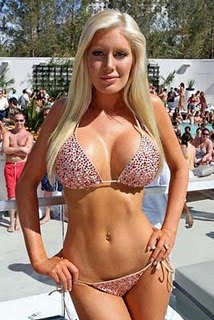Rumors have it that Kobe Bryant is ready to sign a contract to play professional basketball in Italy during the NBA lockout, so I thought I would run a blog entry about him that originally appeared in 2010 in The Weekly Rader, a blog created by my friend Dean Rader. This essay will be republished in December in a college textbook by Greg Barnhisel, Connecting with Culture: Readings for Writers.
 |
| Picture taken at the artist's booth at Venice Beach. |
I love this picture.
I saw it being sold as a poster by a vendor at Venice Beach. He also was selling images of Marilyn Monroe with thuggish tats on her body. But it was this picture of Kobe that fascinated me more.
I saw it and laughed before I even understood what I was laughing at. I stared at it, fascinated by it and by my fascination with it. As I tried to understand my reaction to this gunslinging Kobe, I was reminded of reception theory. Yes, even on a sunny day in Venice, with bikini-clad girls rollerblading past, over the din of the construction of yet another medical marijuana dispensary, and lit by the flashes from the digital cameras of a thousand German tourists, I could wax wonk-like about a bootleg poster.
Must I over-analyze everything? Yes. Yes, I must.
In literary studies, reception theory is an attempt to explain the process by which audiences understand texts. Traditional literary studies had concentrated on what an author might have intended to communicate with a text, but reception theory (and reader response theory) concentrates on the reader’s interpretation, regardless of how that meaning deviates from the author’s intent.
One of the many influences on how a person receives a text is his/her community. People who share a culture, an economic class, or a community are likely to interpret a text in similar ways. And if the maker of a message shares this connection with the audience, it is more likely the audience will generate an interpretation similar to the maker's intended message. The further apart creator and audience are, the less likely they will be in agreement.
As I stared at Gangsta Kobe, I knew I had no way of knowing what its creator meant to convey since I didn't know who had made it. And I knew that what the poster could mean would depend a great deal upon who was looking. Is the poster celebratory? Does it appeal to people who see themselves as gangsters? Are they embracing Kobe as one of their own?
This seems odd when you think he so clearly is NOT one of them. He is a multi-millionaire. He spent much of his childhood in Italy, where his father played pro basketball. He did not grow up in the American inner city. He did not know the mean streets. He is more scampi than Scarface. However, Los Angeles is obsessed with the Lakers. Gangsters are obsessed with the Lakers. The people who identify with gangsters, even though they may go to church every Sunday, are obsessed with the Lakers. And so perhaps they claim him as one of their own, and they dress him up in the images from pop culture paraphernalia they are familiar with -- movies, rap and hip-hop videos, CD covers, etc.
Do they imagine Kobe sharing their fantasies of fighting back against a system they may feel oppresses them? Is this poster some kind of Robin in the ‘Hood fantasy? Do they dream of Kobe following Public Enemy’s instructions to “Fight the Power”? Do they hope Kobe will descend from his gated community, arm his merry band of bodyguards, and cause some serious mayhem? My original title for this piece was "Ice Kobe," an allusion to Ice Cube, a former member of N.W.A., one of the pioneers of gangsta rap.
(By the way, no one could ever make a similar poster with a player from the Clippers. That would be ridiculous.)
Or is the image mocking? Does it appeal to an audience that sees Kobe as unlike themselves and similar to those lower-income people who identify with gangsters? Does the poster suggest that Kobe, despite his millions and comfortable childhood, is a gun-wielding criminal at heart?
Is it a racist poster? It may appear comical, but perhaps beneath the laughter is a quiet fear about the violence that can come from black anger.
Is it the celebration of the wannabe? You know, Seth Green's character from Can’t Hardly Wait. Jamie Kennedy’s character from Malibu’s Most Wanted. Does this poster hang in the bedrooms of nerdy boys across L.A., boys who wish they could be as cool as Kobe? Boys who mash up being cool and being black with being gangsta?
Ultimately, I cannot know what the poster means. And the fascination it holds for me is exactly the fact that I cannot know. I am fascinated not by what its ultimate meaning might be -- that is rather UNfascinating -- but by its simultaneous and conflicting and irresolvable messages.
+ + +
I have a copy of the poster in my office now. Once I was contacted about reprinting the essay in a textbook, I had to locate the artist. I had several conversations him down at the boardwalk on Venice Beach. I was careful to never ask him what he intended the picture of Kobe to mean. I didn't want to know. You can check out some of his crazy, wonderful images through his Flickr account. His professional name is Venicewow. Go find him down by the beach and buy some of his stuff.






